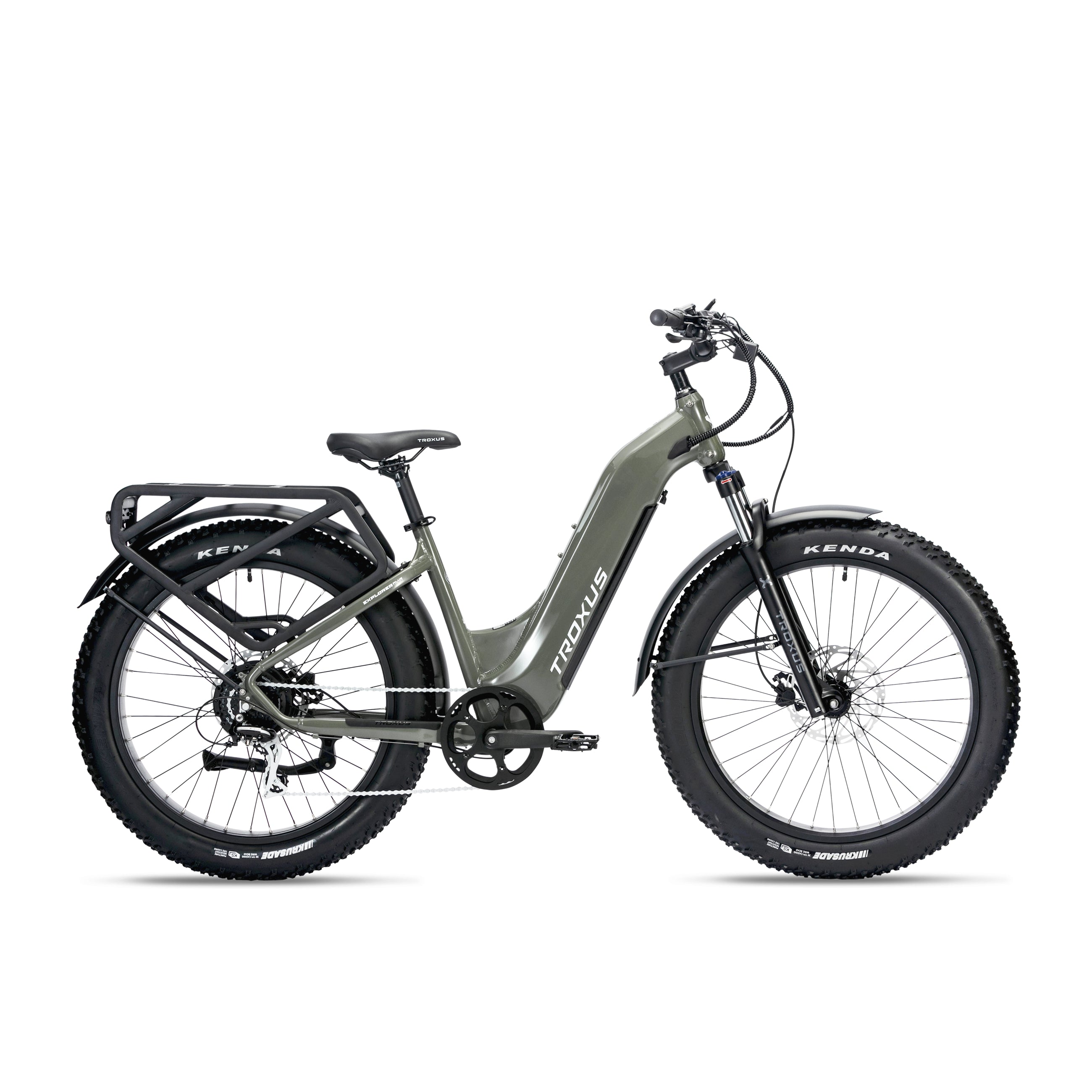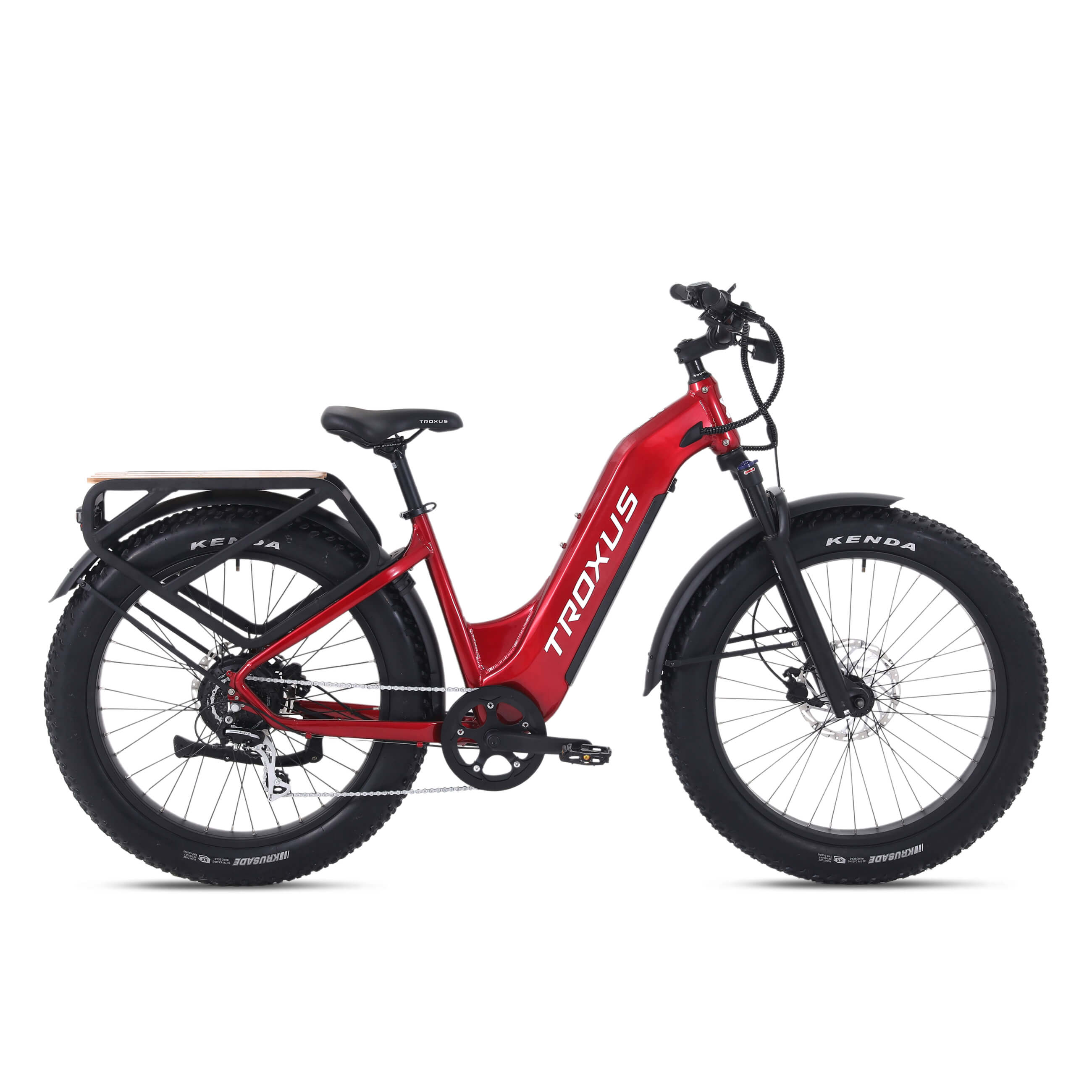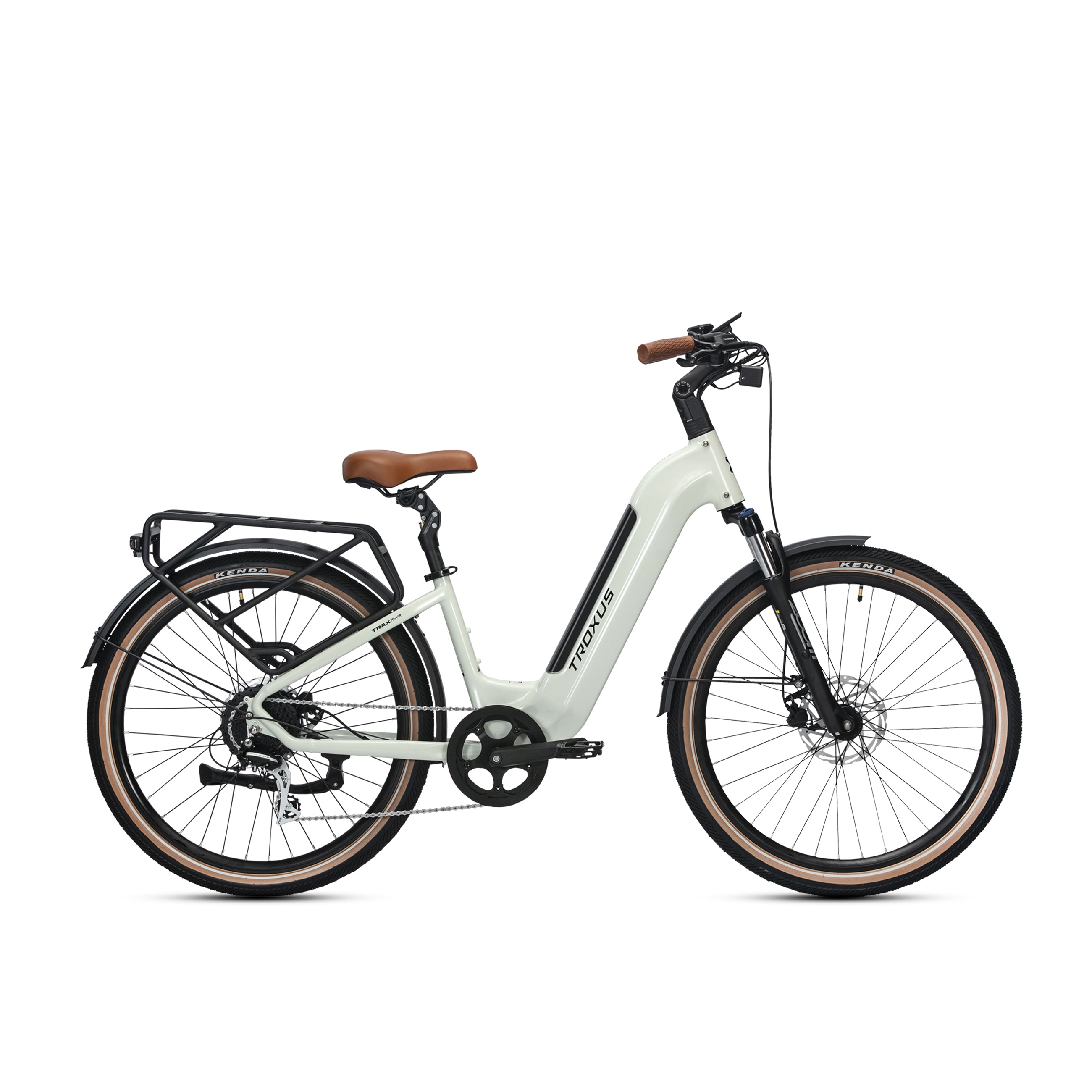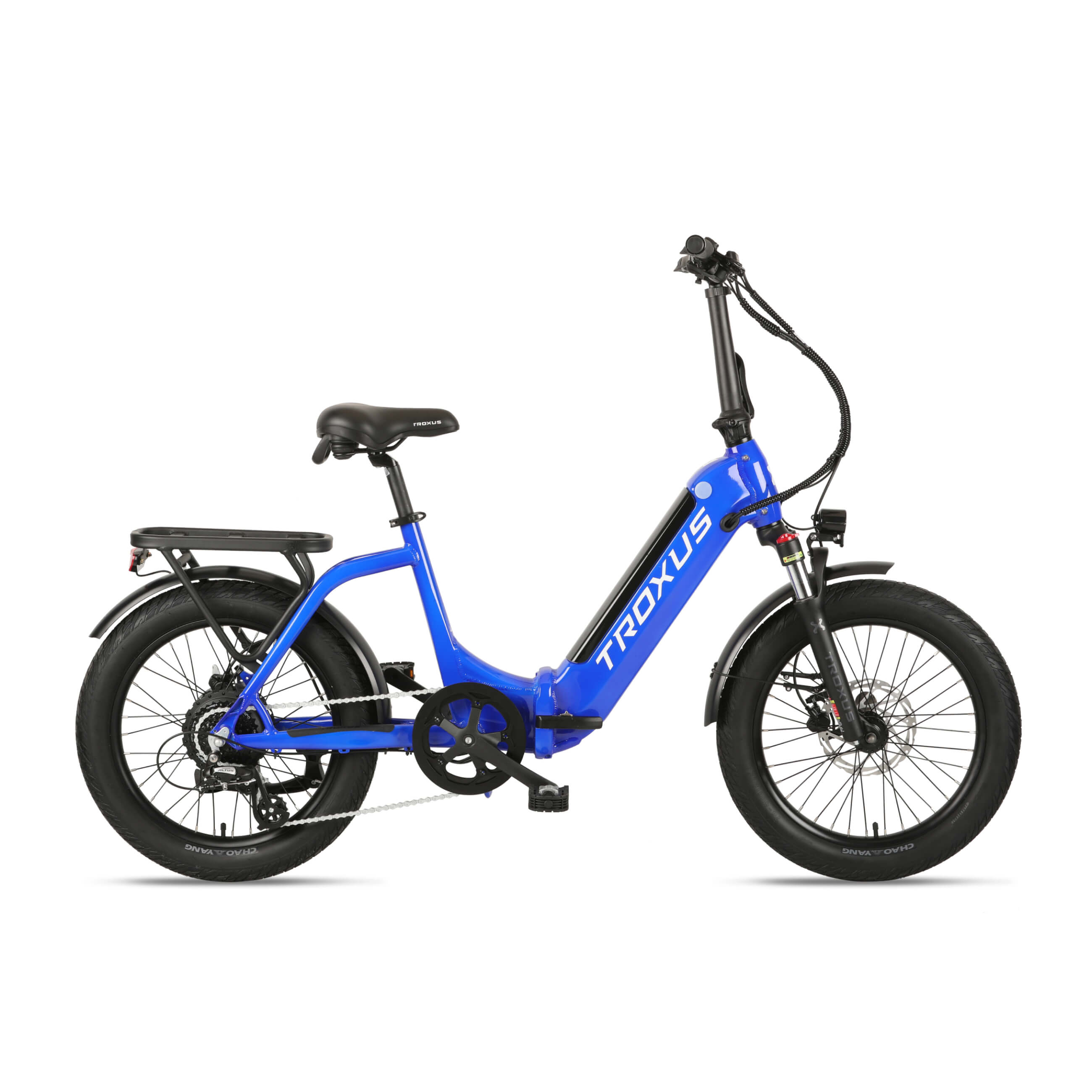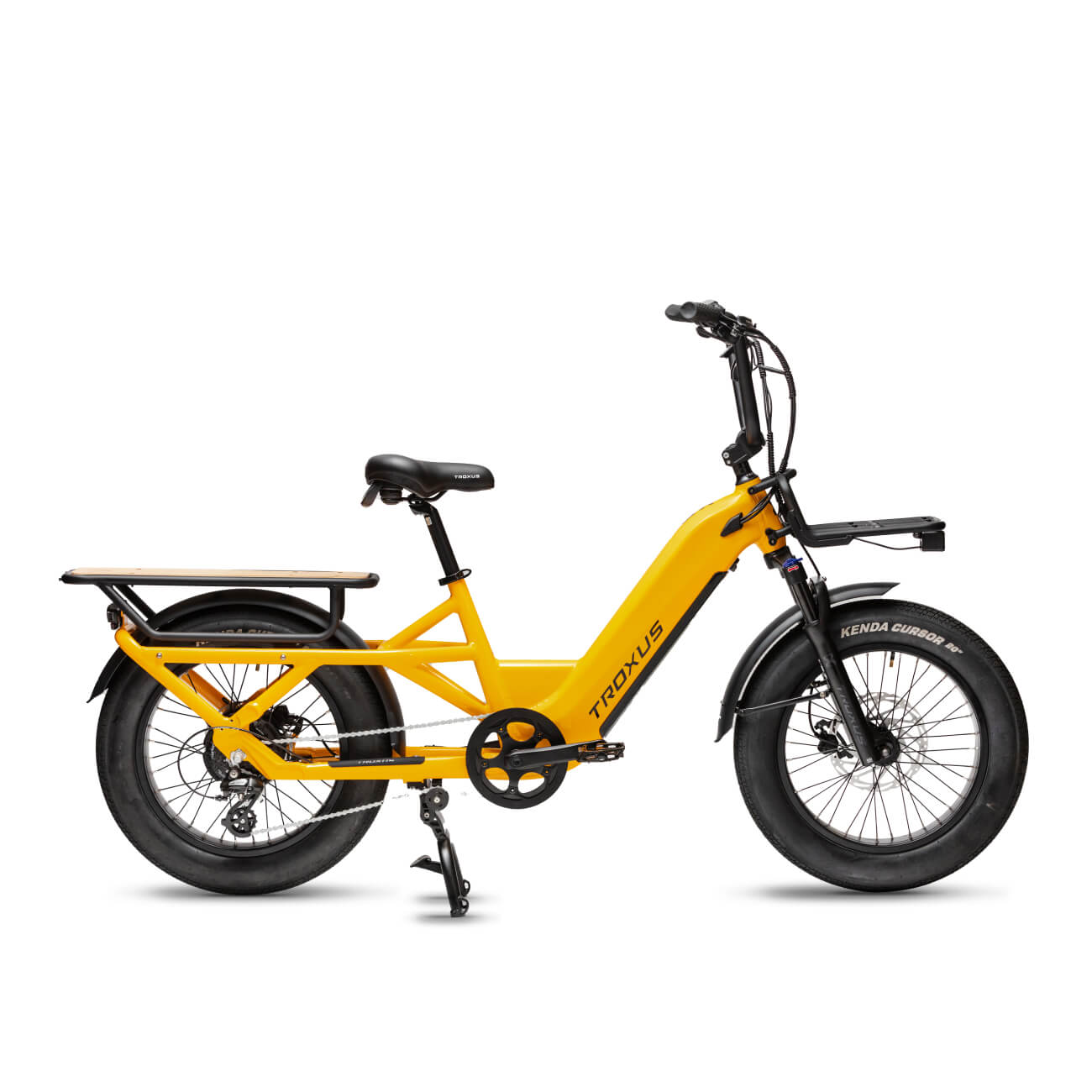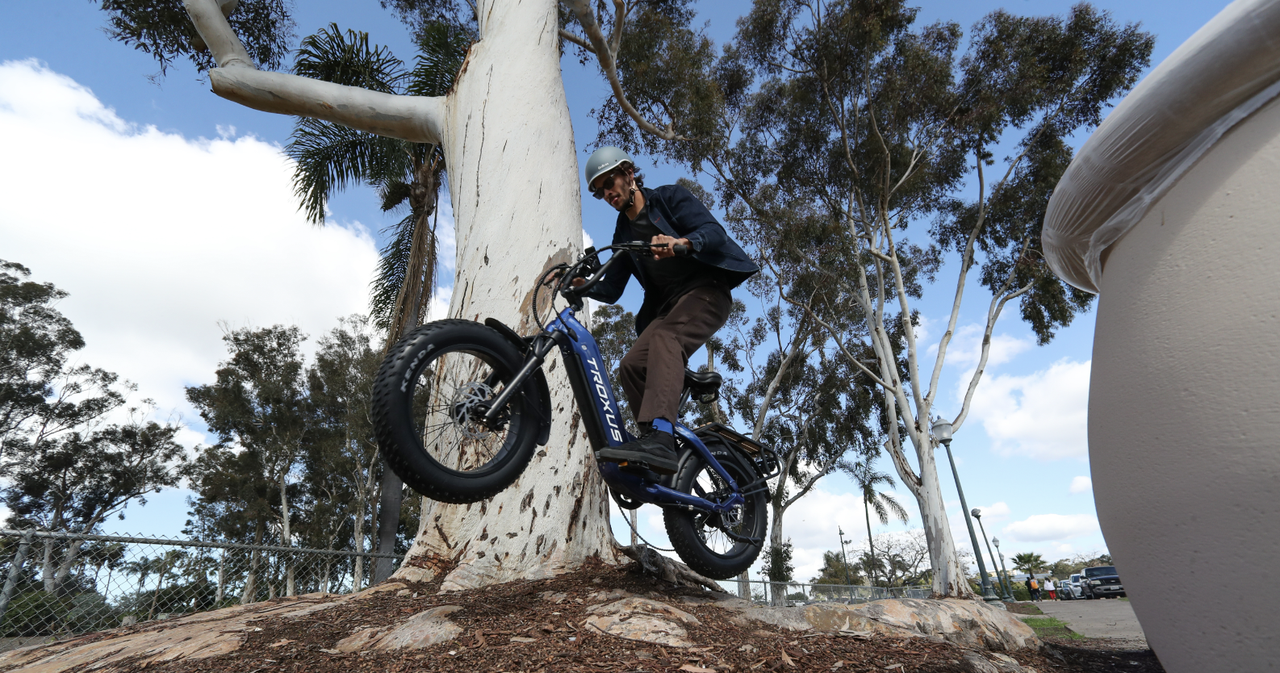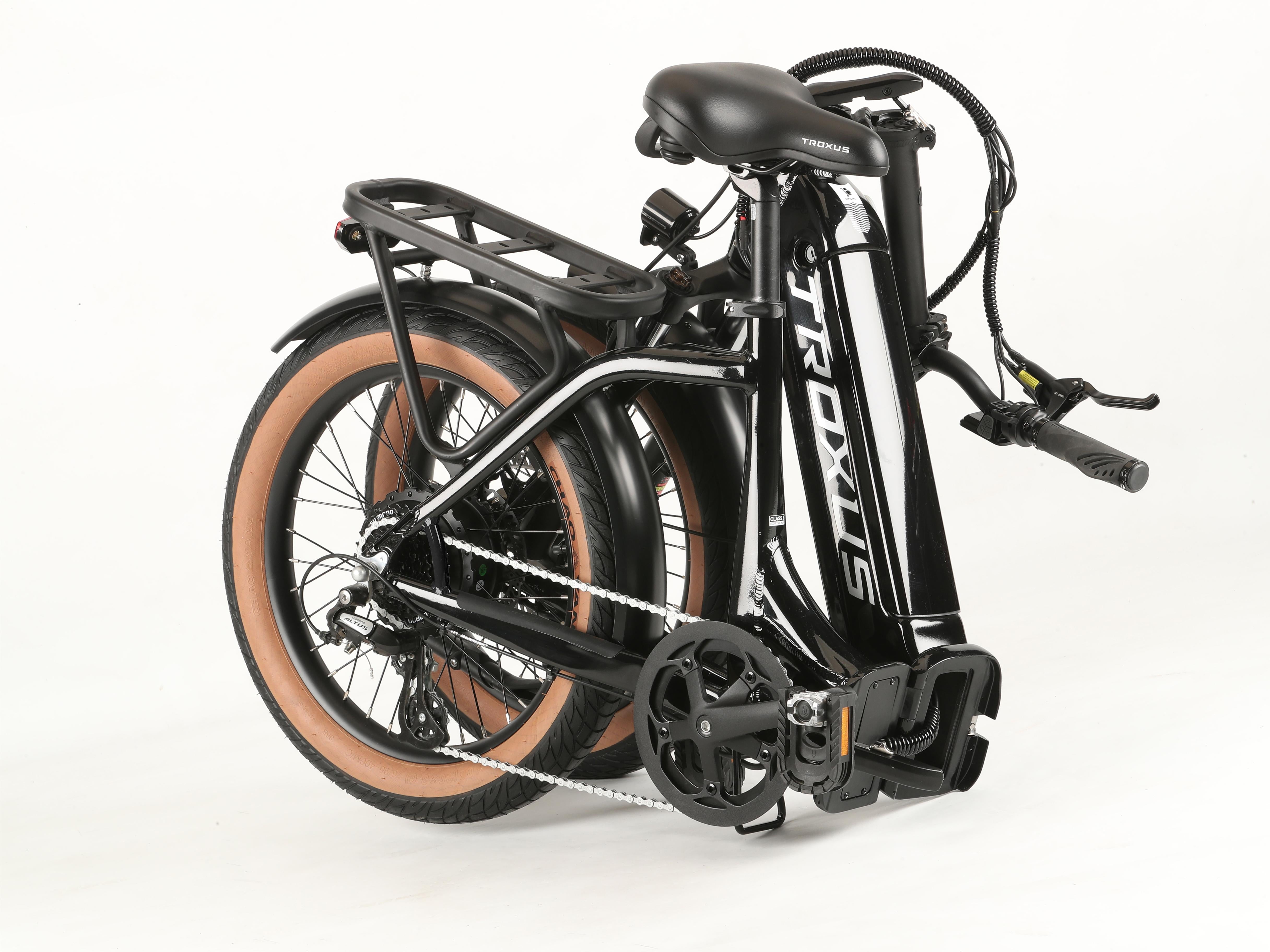Troxus is an American brand that has been involved in bicycles for decades, and each staff member has more than 30 years of experience in the industry. From design, research and development to production, every link is perfect.
The Trax 1.0 Ebike is the latest product launched by troxus, which is designed for commuter bikes and equipped with large-capacity battery that gives the bike a staggering 70 miles of range. The Trax 1.0 Ebike is a powerful and versatile electric bike with its high-performance motor, durable frame, and advanced suspension system, it offers an exhilarating ride experience like no other. Traffic and parking hassles become a thing of the past, as you zip through the city in style. This guide introduces the product details of the trax 1.0 ebike, summarizes some common faults of the Ebike, and you can learn about the maintenance measures of the trax 1.0 ebike through this guide.
Content
Troxus Trax 1.0 Ebike Product Description
Compared to The Trax Lightweigt, What Upgrades Have Been Made to The Trax 1.0 Ebike?
Advantages of Trax 1.0 Ebike When Riding In The City
Common Troubleshooting Methods of Ebike
- Describes How to Troubleshoot Battery Faults
- How to Deal with Electrical System Faults
- How to Deal with Motor Faults
- How to Handle Display or Controller Faults
- How to Deal with Brake System Failure
- How to Deal with Tire and Wheel Failure
Troxus Trax 1.0 Ebike Maintenance Methods
- Knowledge of Ebike Battery and Charger
- Ebike Battery Maintenance Methods
- Trax 1.0 Ebike Brake Maintenance Tips
- Trax 1.0 Ebike Drive System Maintenance Tips
- Regular Inspection and Maintenance of the Frame and Suspension
- How to Clean Your Trax 1.0 Ebike
Troxus Trax 1.0 Ebike Product Description
First things first, let's introduce you to the star of the show - the Troxus Trax 1.0 Ebike. This electric bike boasts a sleek design and lightweight aluminum frame, making it both stylish and easy to handle. Equipped with a powerful 500W motor, this ebike can reach speeds up to 28mph (45km/h) and has a range of 70 miles (112 km) on a single charge. But don't let its narrow tyre fool you, this ebike packs a punch with its ability to handle rugged terrains and steep inclines with ease.

Troxus Trax 1.0 Ebike System Parameters and Product Specs
Now that we've piqued your interest, let's dive into the nitty-gritty details of what makes this ebike tick. The performance of the Trax 1.0 ebike is simply mesmerizing! It comes equipped with a 48V/15Ah battery and has a range of 70 miles (112 km) on a single charge, the trax 1.0 features an integrated Colored LCD display that shows speed, distance, battery life, and more.
The 8-speed Shimano gears provide smooth and efficient shifting, while the front suspension fork ensures a comfortable and stable ride. And with its KENDA® 27.5"x2.2" wheels and adjustable seat height, make your ride more comfortable! This ebike comes in a variety of colors and sizes, which can suit riders of varying sizes, and it can hold up to 350 pounds.

Technical Principles of Troxus Trax 1.0 Ebike
The Trax 1.0 operates with a brushless gear motor at the rear hub and is equipped with an intelligent Pedelec system that provides smooth acceleration and power assistance while riding. Trax 1.0 is based on the traditional bicycle, equipped with a torque sensor as the core of the power system, and equipped with a motor and battery;
It also has three riding modes - pedal assist, pure electric and manual - giving riders the flexibility to choose how they want to ride. The brake system is a hydraulic disc brake with a brake sensor, which helps to ensure that you brake safely.
The e-bike also has built-in safety features such as automatic headlights, brake lights and horns to ensure a safe and enjoyable riding experience.
Compared to The Trax Lightweigt, What Upgrades Have Been Made to The Trax 1.0 Ebike?
If you're familiar with our Trax Lightweight Ebike, you might be wondering what makes the Trax 1.0 different and worth an upgrade. First of all, the biggest difference is that the battery capacity of the two is different, the trax 1.0 is equipped with a 15ah battery, while the trax Lightweight battery is only 10ah, which makes their range very different. If you have higher requirements for battery life, you need to consider a larger capacity battery.
Secondly, the motor is different; The trax 1.0 motor is 500w, while the trax lightweight motor is only 350w, and the stronger the motor, the more power.
Third, the Troxus Trax 1.0 Ebike has a top speed of 28 MPH, while the Trax lightweight has a top speed of 20 MPH. If you prefer higher speeds, consider Trax 1.0.
Finally, the load capacity is different, obviously the Trax 1.0 has a maximum load capacity of 350 pounds, while the Trax lightweight has a maximum load capacity of 300 pounds.
There is also a big difference in color, all in all, you can choose the right product according to your needs and budget.
Advantages of Trax 1.0 Ebike When Riding In The City
- No more traffic jams and parking woes - With the Trax 1.0 Ebike, you can easily navigate through crowded streets and save time on finding parking spaces.
- Cost-effective and environmentally friendly - Say goodbye to expensive gas bills and harmful emissions by switching to an electric bike for your daily commute.
- Versatility in terrain - The Trax 1.0 Ebike can handle rugged terrains and steep inclines, giving you the freedom to explore different routes.
- Health benefits - Riding an electric bike is still a form of exercise, helping improve cardiovascular health and reduce stress levels.
- Customizable settings - With its three riding modes and adjustable seat height, you can customize your ride according to your preferences and comfort.
- Sleek design - The Trax 1.0 Ebike's modern and sleek design is sure to turn heads as you ride through the city in style.
Common Troubleshooting Methods of Ebike
1. Describes How to Troubleshoot Battery Faults
If you own a Trax 1.0 ebike, you probably already know that the battery is one of the most critical components. Without a functioning battery, your e-bike will not be able to operate. Here are some common battery issues you may encounter and how to fix them.
The battery cannot be charged
If you find your battery can't be charged, the first thing you should do is check the battery connection. Make sure the battery is securely attached to your bike and charger. A loose connection can cause the battery to fail to charge properly. You should also check that the charger is working properly by testing it on another e-bike.
If the battery connection is not an issue, you may need to test the battery. Remove the battery pack from the e-bike and charge it on the bench. Once fully charged, remove the battery from the bike to test the battery. If it has a charge, the problem will be with your e-bike - most likely a short circuit in the bike line or motor. However, if it cannot be charged, the battery may be faulty. It needs to be changed to a new battery.
The battery drains too quickly
If the Trax 1.0 Ebike battery discharges too quickly, one of the most common reasons is that the riding terrain is complicated and too much power is used when riding, in which case the battery will drain faster. You can try using a lower speed to save power.
Another reason is that your e-bike is carrying too much weight. The heavier the load, the more power the battery uses. Try to lighten the weight or distribute it more evenly.
The third reason is that the battery is aging due to too long use time, in which case you need to consider replacing the battery.
2. How to Deal with Electrical System Faults
If your e-bike is experiencing an electrical system problem, some common culprits may be contributing to the problem.
The cable or connector is faulty
If your e-bike is experiencing electrical problems, check the wiring and connectors first. Over time, the wires may wear out, or the connectors may become loose, which can cause various problems.
You will need to check the wiring and connectors for any visible damage to resolve this issue. If you find any frayed wires or loose connectors, replace them. You may also consider using electrical tape to secure loose wires or connectors. It would be a good idea to seek professional repair.
3. How to Deal with Motor Faults
If your electric bike's motor fails, a common problem is motor wear and may need to be replaced. Another problem may be a problem with the motor controller, which regulates the speed and power of the motor.
Check the wiring and connectors of the motor for any obvious damage to diagnose and resolve the problem. If everything looks good, you may need to take your e-bike to a professional to test, repair, or replace the motor and controller.

4. How to Handle Display or Controller Faults
If your e-bike's display or controller fails, it can cause a variety of problems with the bike's performance. A common problem is that the display does not show accurate information, such as battery life or speed. Another problem may be that the controller does not respond properly, such as failing to power the motor.
To fix this problem, check the wiring and connectors for any visible damage. If everything seems fine, you may need to reset your monitor or controller by disconnecting the battery and waiting a few minutes before reconnecting. If the problem persists, that's most likely a controller failure, you may need to take the e-bike to a professional or manufacturer to repair or replace the display or controller as needed.
5. How to Deal with Brake System Failure
One of the most important components of an e-bike is the braking system. It plays a vital role in ensuring your safety while riding. However, as with any mechanical system, e-bike brakes can become problematic over time. Common faults are as follows:
There was a noise while braking
If you hear a squeaking or rubbing sound when you step on the brakes, one of the reasons for this failure is that the brake pads are not aligned. To solve this problem, you need to adjust the position of the brake pads. Loosen the brake pad fixing bolt, adjust the brake pad position, and then tighten the bolt, so that it can be solved.
Another possible cause is a dirty or contaminated brake rotor. To solve this problem, clean the brake rotor with a clean cloth and alcohol. If the rotor is heavily contaminated, it may need to be replaced.
Poor braking performance
If you find that the braking performance of an electric bike is reduced and the braking performance is poor, one of the most common reasons is brake disc wear. Over time, brake pads wear out, reducing their effectiveness. To fix this problem, you need to replace the brake pads. Make sure you choose the right type of brake pads for your e-bike.
The second reason may be that the brake cable is loose or worn; If the brake cable is loose or worn, it will affect the force applied to the brake disc. You need to adjust or replace the brake cable to solve this problem.
Finally, if your e-bike is equipped with hydraulic brakes, and you need to pull the joystick in a lot before the brakes work. Your brakes may need to be deflated, or there may be a leak in the hydraulic system. If you doubt this, look for a qualified bicycle mechanic to check your braking system.
6. How to Deal with Tire and Wheel Failure
For e-bikes, tire and wheel issues are some of the most common problems riders face.
Punctured or flat tire
One of the most common tire problems is puncture or air leakage. If the tire is punctured or deflated, the wheel must be removed from the bike first. After removing the wheel, you can remove the tire from the rim and check the inner tube for punctures or holes. If a puncture is found, it can be repaired using a tire repair kit. If the hole is too large, you may need to replace the inner tube.
Wheel Misalignment or Wobble
If your e-bike wheel wobbles or spins out of alignment, you must first remove the wheel from the bike to solve this problem. You can check the spokes to make sure they are tight and properly aligned. If any loose spokes are found, they can be tightened using a spoke wrench. If the rim is bent, you may need to take it to a bike shop to have it trimmed. If the hub is damaged, you may need to replace it, do not hesitate to contact the manufacturer of ebike as soon as possible.
Conclusion
Electrical, motor, display and brake system failures are common problems that e-bike riders may encounter. Regular maintenance of your e-bike can help prevent these problems from occurring or becoming more serious. However, if you do experience these failures and you find yourself unable to fix them, don't hesitate to call the manufacturer immediately and seek professional help. Be sure to check the product warranty on the manual, which can help you save money on repairs.
Troxus Trax 1.0 Ebike Maintenance Methods
1. Knowledge of Ebike Battery and Charger
We need to know some common sense about chargers and batteries:
Why does the charger or battery heat up while charging?
For Bosch or Samsung, the conversion of 220V mains voltage to 36V results in some energy loss, usually 10% according to Bosch, which is converted into heat. When the capacity is reached, the chip charge will automatically turn the charge off, so that it will not overcharge, increase the load or damage the battery. So it is normal for the charger and battery to heat up slightly while charging.
Different charging methods will affect the capacity and service life of the battery.
Different charging methods will affect the charging efficiency of the battery, which in turn affects the capacity of the battery. Common charging methods include ordinary charging, fast charging, constant current charging, etc., in which fast charging can quickly fill the battery, but it will damage the battery life.
So it is necessary to choose the appropriate charging method. Overdischarge or overcharge should be avoided when charging. Excessive discharge will damage the capacity of the battery, and overcharging will shorten the service life of the battery.
Therefore, it is necessary to use the original charger, which can ensure the capacity and service life of the battery.
2. Ebike Battery Maintenance Methods
The life of the ebike's battery, in addition to its inherent life, depends on how you use it, just as your old phone now needs to be charged every five minutes, the Trax 1.0 battery will inevitably age over time. Here are some tips to help you minimize losses and keep the power on for longer.
Avoid excessive discharge
Overdischarge is when the battery discharges so much that it can no longer provide enough power to the device. Avoiding excessive discharge can extend battery life, while also reducing the risk of battery performance degradation. When using a battery, charge it as much as possible before it runs out.
Avoid temperature extremes
In order to maximize battery life and performance, it is important to store and charge at the correct temperature.
The room temperature is between 20-25°C (68-77°F), ideal for preventing self-discharge and maintaining capacity. Extreme temperatures can harm battery performance and life, with high temperatures leading to faster degradation and reduced capacity, and low temperatures reducing performance. When charging, make sure the temperature is within the recommended range of the battery. Store batteries in a cool, dry place, away from direct sunlight or heat sources, and consider using a temperature-controlled storage device or charging device.
Periodic charging
Proper maintenance of e-bike batteries is essential to ensure their longevity and performance. Even if you don't use an e-bike very often, it is still recommended that you charge the battery regularly. That's because e-bike batteries, like other rechargeable batteries, self-discharge over time. Self-discharge is a natural process that occurs when a battery is not in use, resulting in a loss of capacity.
Charging the battery regularly helps prevent self-discharge and maintains battery capacity. The recommended charging cycle for most e-bike batteries is at least once a month, but this can vary depending on the battery chemistry and manufacturer's instructions. Be sure to follow the recommended charging interval to avoid damaging the battery or shortening its service life.
Keep clean and dry
Moisture and corrosive substances can damage the battery housing and internal components, so it is important to avoid exposing the battery to these substances.
If the battery does get wet, wipe it dry with a soft dry cloth and allow it to air dry before using or charging. Keep the battery clean and free of dust and debris, but avoid harsh chemicals or abrasive cleaners as they may damage the battery housing or internal components.
By following these simple guidelines, you can help ensure that your e-bike batteries provide reliable and efficient power for years to come.
3. Trax 1.0 Ebike Brake Maintenance Tips
Proper maintenance ensures that your e-bike's braking system works efficiently and lasts longer. Here are some tips on how to maintain electric bike brakes:
- Check brake pads regularly for wear and replace them if necessary.
- Clean the brake disc with a clean cloth and alcohol to remove dirt or contaminants.
- Check brake cable for wear and replace if necessary.
- Make sure the brake pads are properly aligned with the rotors.
- Check brake lever for correct adjustment and tightness.
Following these tips will ensure that your e-bike's braking system works efficiently and provides a safe and enjoyable riding experience.

4. Trax 1.0 Ebike Drive System Maintenance Tips
Regular drivetrain maintenance can prevent problems and keep your e-bike running smoothly. Here are some hints:
- Clean and lubricate your chain regularly.
- Check your chain tension and adjust as needed.
- Check the alignment of the chain puller and adjust it as needed.
- Replace the chain and flywheel regularly to prevent wear.
- Check your gear box gears for worn or bent.
5. Regular Inspection and Maintenance of the Frame and Suspension
To prevent frame and suspension problems, it is important to check and maintain your e-bike regularly. This includes checking for any signs of damage or wear and keeping the suspension system properly lubricated and maintained. By properly maintaining your e-bike, you can help prevent problems and ensure that your bike stays in top condition for years to come.
6. How to Clean Your Trax 1.0 Ebike
Keeping your e-bike clean not only makes it look good, but also helps prevent damage and wear. Here are some tips for cleaning your Trax 1.0 ebike:
- Use a soft damp cloth to wipe down the frame, making sure to remove any dirt or debris.
- For tougher grime, use a mild soap solution and rinse thoroughly with water.
- Avoid using high-pressure water as it can damage electrical components.
- Dry the bike thoroughly with a soft towel or allow it to air dry.
- Lubricate any moving parts, such as the chain and gears, after cleaning to prevent rust and wear.
By following these tips, you can keep your e-bike looking like new and performing at its best. Regular maintenance and proper care are key to extending the life of your Trax 1.0 ebike and ensuring a smooth and enjoyable riding experience. No matter which brand you choose or how powerful your e-bike is, proper maintenance is essential for its longevity and performance.
Sum up
The Trax 1.0 ebike is designed to bring convenience and enjoyment to your daily commute or leisurely rides. To ensure that you get the most out of your e-bike, it is important to properly maintain and care for it. By following these tips and guidelines, you can help extend the life of your e-bike's battery, brakes, drive system, frame, and suspension. Regular maintenance not only improves performance and longevity but also ensures a safe and enjoyable riding experience.


